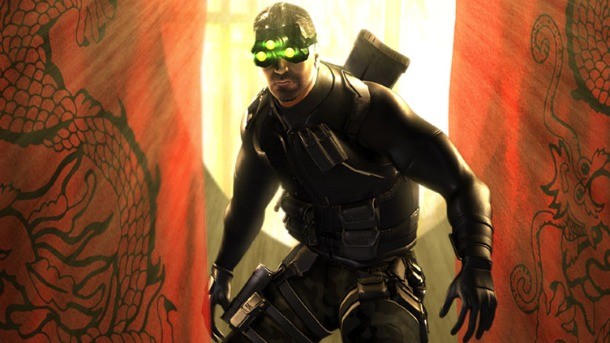Please support Game Informer. Print magazine subscriptions are less than $2 per issue
Editor Roundtable: A Tribute To Tom Clancy

This morning, we learned that acclaimed author Tom Clancy passed away. In addition to being a prolific writer, he inspired a long line of games that spanned a variety of genres. Today, we look back at some of our favorite Tom Clancy games.

Tim Turi
The Metal Gear Solid series pulled me into the stealth genre with its gonzo story and fantastical situations. The first Splinter Cell game made me realize that stealth can be fun even when it’s more grounded. I loved the slower paced, more realistic espionage of Sam Fisher’s universe. Carefully picking locks, peeking under doorways with fiber-optic cables, and doing the splits high above a narrow corridor are all fond memories.

Mike Futter
The original Splinter Cell was one of my most memorable gaming experiences. While Clancy only endorsed the game (rather than penning it himself), it married the geopolitical intrigue of Clancy's work with cool gadgets and guns and an approach to in-game lighting that revolutionized stealth gameplay. I've been a long-time fan of Clancy's novels, and spent my summers in middle and high school reading The Hunt for Red October, Patriot Games, Red Storm Rising, and so many more. Clancy will be deeply missed, but his influence will live on through the games that bear his name.

Ben Reeves
I've always been a fan of stealth games, so I gravitated to the Splinter Cell series immediately. However, after four solid entries, I felt like the series was starting to fall into a niche. While people like me were happy to take our time sneaking through the shadows, the series classic trial-and-error gameplay rubbed some gamers the wrong way. Conviction solved that problem with a brilliant Mark and Execute system that kept the action flying while still allowing sneakier players to pick and chose their way through the games levels without alerting guards. A heart-pounding espionage plot told seamlessly without load screens and a couple of brutal interrogation sequences also added to Conviction's appeal. If you've stayed away from this series because stealth isn't your cup of tea, you might be surprised by Conviction's sweet brew.

Jeff Marchiafava
I haven’t played a ton of Tom Clancy games, but the original Rainbow Six will always hold a special place in my heart. I played the watered-down N64 version, but it still delivered a gameplay experience that was novel for the time and genre – and frankly still is.
Military shooters nowadays focus on constant action and absurd setpiece moments. Health magically regenerates, ammo is plentiful, and the player doesn’t have to focus on much beyond running to the next checkpoint and shooting anything that pops up along the way. No military shooter is complete without an on-rails chase sequence (“Here, fire this grenade launcher magically equipped with unlimited ammo out the back window!”), a helicopter crash or two (“We’re going down – better hold onto something because you’re about to be the sole survivor!”), and at least one mission requiring you to do whatever it takes to save freedom (“I don’t want to light this bus full of children on fire, but we can’t let the terrorists win!”).
Rainbow Six was different. Tom Clancy’s first tactical shooter actually focused more on the “tactical” than the “shooter,” and attempted to emulate what a real counter-terrorism unit does in the field. Players had to plan their missions, choosing their squads and setting up waypoints and orders on a map before the action began. The planning stage was important because unlike most shooters, soldiers couldn’t take more than a shot or two before going down, and operative deaths were permanent. Rainbow Six was more challenging than any other game I had played at the time, but not in a twitchy, reflex-driven way. I had to use my brain, and think about environments and enemy encounters in ways I never had before (15 years later and I still walk up video game stairwells the same way, i.e. backwards while looking up at the next floor for camping enemies).
Tom Clancy’s shooter franchises have morphed over the years, acquiescing to the action-obsessed crowd. However, I’ll always admire Rainbow Six for its tactical roots. Real military operations rely on meticulous planning and teamwork to succeed, not lone-wolf action heroes. Early Tom Clancy titles acknowledged this, and required players to act intelligently – an attribute I hope to see in more military shooters in the future.

Jeff Cork
I played Rainbow Six: Rogue Spear on the Dreamcast, but I didn’t actually have any real fun with the tactical-military series until Vegas hit in 2006. It wasn’t nearly as technical – most commands were issued in-game, as opposed to laborious pre-mission planning – but it was far more enjoyable. More than anything else, it provided the illusion that I was part of an elite squad of heroes who took out terrorists with ruthless efficiency. The setting made the action especially compelling, taking place among the eerily quiet ruins of casinos and other familiar Las Vegas sights. It also let players put their faces in the game, with often hilarious results.










